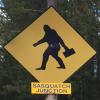hiflier -
I apologize as well.
My perception here is that we have a lot of sketchy assumptions we can't verify. We don't know about bigfoot demographics. Life span .. we assume, but when we assume, we have to remember the assumption is off the mark some amount in some direction. We don't truly know about size, we have report data but we only assume it is representative of the whole age spectrum, we don't actually know that. Could be that like buck deer, when bigfoots hit a certain age/size, their behavior changes in a way which causes them not to appear in the data anymore. Big bucks do not behave like the rest of the population made of younger bucks, does, and fawns. Big bigfoots might do the same. Maybe our data is all about their teens and adolescents, not the mature adults. We don't know. We assume. We should have sense enough to question our assumptions.
Where I'm going ... we have reports of old-looking bigfoots .. but we only assume they're near end of life, we don't know that and we don't know WHEN they reach end of life. That makes it hard to predict where, and when, to start looking.
I think ... speculative ... the habituators would be those most likely to have the information that is needed. Very likely they've had years, even decades, watching the same bigfoots. They might well have a good idea of the age progressions. Certainly a better chance than different people, each with one sighting, who might or might not be seeing the same bigfoot crossing the road every 3rd or 4th year at a particular milepost, right?
I think so far as finding a corpse goes, SWWASAS has the most probable approach to produce results. Since we're not finding dead ones lying around, somehow, some way, they're either gathered up or they sense death and hole up to die. Natural disasters seem the most likely mechanism to disrupt that pattern. Normal landslides are possible but on such a small scale I think they are unlikely. The lahars, etc left by Mt St Helens' eruption are the best bet with fires coming next. I do not think avalanches present much chance of catching a bigfoot. They are not Bugs Bunny Abdominal Snowmen living in deep snow. They might cross it but they are more likely to stay at lower elevations and go around the ends of ridges staying where food is more available. Avalanches generally do not occur where there are significant year around animal protein sources.
The unfortunate thing is we are probably not going to have good enough demographic data about bigfoots 'til after their existence is proven and we can study them (or just ask, depending on what they prove to be) to predict where to look. Catch 22, cart and horse, etc. I think we will remain somewhat reliant on accident. We can do things to learn, to hedge our bets, but even tripling the odds if they start at less than a percent still leaves us with low odds. It is possible we've already done the most probable thing we could do and given up on it because it didn't pay off fast enough.
Edit: what if, rather than looking for old age deaths, we look for where they are born, for infants that die? Perhaps that could be more predictable with fewer data points?
MIB



